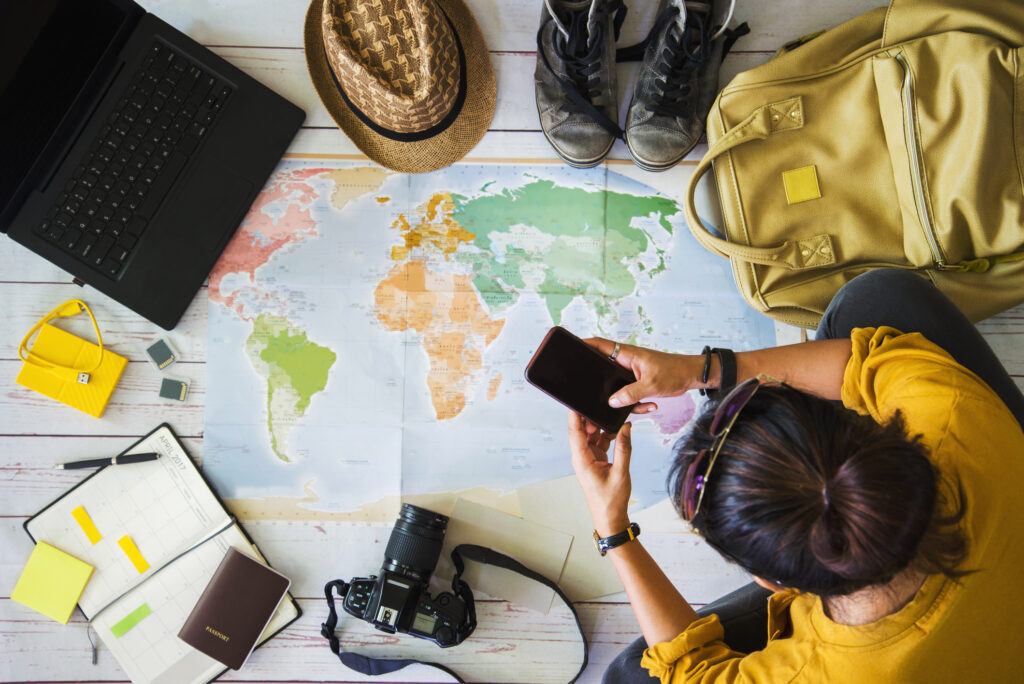Traveling solo for the first time can be an incredibly rewarding experience, offering a sense of freedom and self-discovery that group travel often cannot match. However, it also comes with its own set of challenges and considerations. To help you navigate this journey, here are five detailed tips to ensure your solo adventure is safe, enjoyable, and memorable.
1. Plan and Research Thoroughly

Embarking on a solo trip necessitates thorough preparation and research. This foundational step ensures not only an enjoyable trip but also a safe one. Start by choosing a destination that aligns with your interests and comfort level. Consider the culture, language, and overall safety of the location. Websites like the U.S. State Department’s travel advisory page can provide valuable insights into a destination’s safety.
Once you’ve chosen your destination, dive into research. Learn about the local customs, traditions, and etiquette to avoid cultural faux pas. Understand the basic layout of the city or region, and identify key landmarks and transportation options. Pre-booking accommodations and major transportation can reduce stress and ensure you have a secure place to stay upon arrival.
Create a flexible itinerary that includes must-see attractions, local eateries, and cultural experiences. Having a plan gives structure to your trip, but remain open to spontaneous opportunities that may arise. Familiarize yourself with essential phrases in the local language; simple greetings and questions can go a long way in establishing rapport with locals.
2. Stay Connected and Safe

Safety should be your top priority when traveling solo. Share your travel itinerary with a trusted friend or family member, and establish a routine for regular check-ins. Modern technology offers a range of tools to enhance safety. Use travel apps for navigation, language translation, and accessing local emergency contacts.
Carry both physical and digital copies of important documents such as your passport, travel insurance, and emergency contact information. These can be lifesavers in case of theft or loss. Always have a small amount of local currency on hand for emergencies.
When exploring new places, especially at night, stick to well-lit, populated areas. Trust your instincts—if something feels off, remove yourself from the situation. Avoid displaying valuables like expensive jewelry or electronics, which can make you a target for theft. Instead, use a money belt or hidden pouch to secure your cash and important documents.
3. Pack Light and Smart

Efficient packing is crucial for solo travel since you’ll be responsible for all your belongings. Aim to pack light, bringing only essentials to ease your mobility. Choose versatile clothing that can be layered for various weather conditions and can serve multiple purposes. Packing cubes can help keep your belongings organized and accessible.
Include a small first aid kit with basic medications, band-aids, and any prescription medicines you may need. A portable charger is invaluable for keeping your devices powered, especially for navigation and communication. A good book or journal can provide companionship and entertainment during downtime.
Consider the cultural context of your destination when packing clothing. In some cultures, modest attire is required, while in others, specific dress codes apply for visiting religious sites. Researching and respecting these norms not only shows cultural sensitivity but also enhances your experience.
4. Be Open and Sociable

One of the greatest joys of solo travel is the opportunity to meet new people and form meaningful connections. While traveling alone might seem isolating, it can actually facilitate more interactions with locals and fellow travelers. Staying in social accommodations like hostels or guesthouses can provide opportunities to meet others in communal spaces.
Joining group tours or local events can also be a great way to connect with others. These activities often attract like-minded individuals and can provide a safe environment to meet new people. Engaging with locals can enrich your travel experience, offering deeper insights into the culture and daily life of your destination.
Approach new encounters with an open mind and a friendly attitude. Simple gestures like smiling and greeting others can open doors to conversations. While it’s important to be cautious and trust your instincts, don’t let fear prevent you from forming connections. Many solo travelers find lifelong friends on the road.
5. Embrace Flexibility and Enjoy Solitude

While having a structured plan is beneficial, embracing flexibility can lead to some of the most memorable travel experiences. Be open to changing your itinerary based on recommendations from locals or fellow travelers. Spontaneous adventures often provide unique insights and unexpected joys that rigid plans might miss.
Solo travel is also a perfect time to enjoy solitude and engage in self-reflection. Use this time to pursue activities that interest you, without needing to compromise for a group. Whether it’s exploring a museum, hiking a scenic trail, or simply relaxing at a café, take advantage of the freedom to set your own pace.
Engage in mindful practices like journaling or photography to document your journey and reflect on your experiences. These activities can enhance your appreciation of the moment and provide lasting memories. Embracing solitude can also lead to personal growth, helping you develop greater self-reliance and confidence.
Conclusion
Traveling solo for the first time can be a transformative experience, offering opportunities for personal growth, adventure, and connection. By planning thoroughly, staying connected and safe, packing smart, being open to new encounters, and embracing flexibility, you can ensure a rewarding and unforgettable journey. So pack your bags, set out with an open heart, and discover the world on your own terms. Your adventure awaits!
